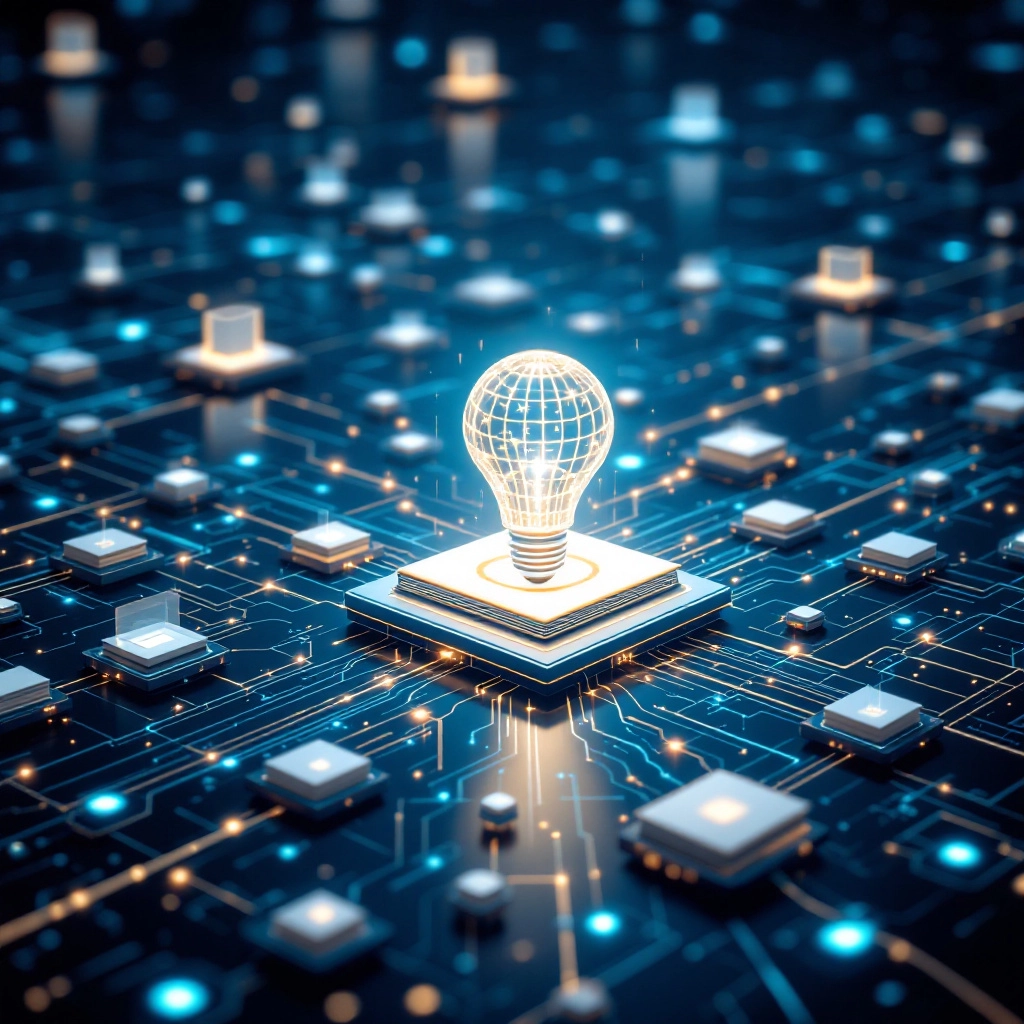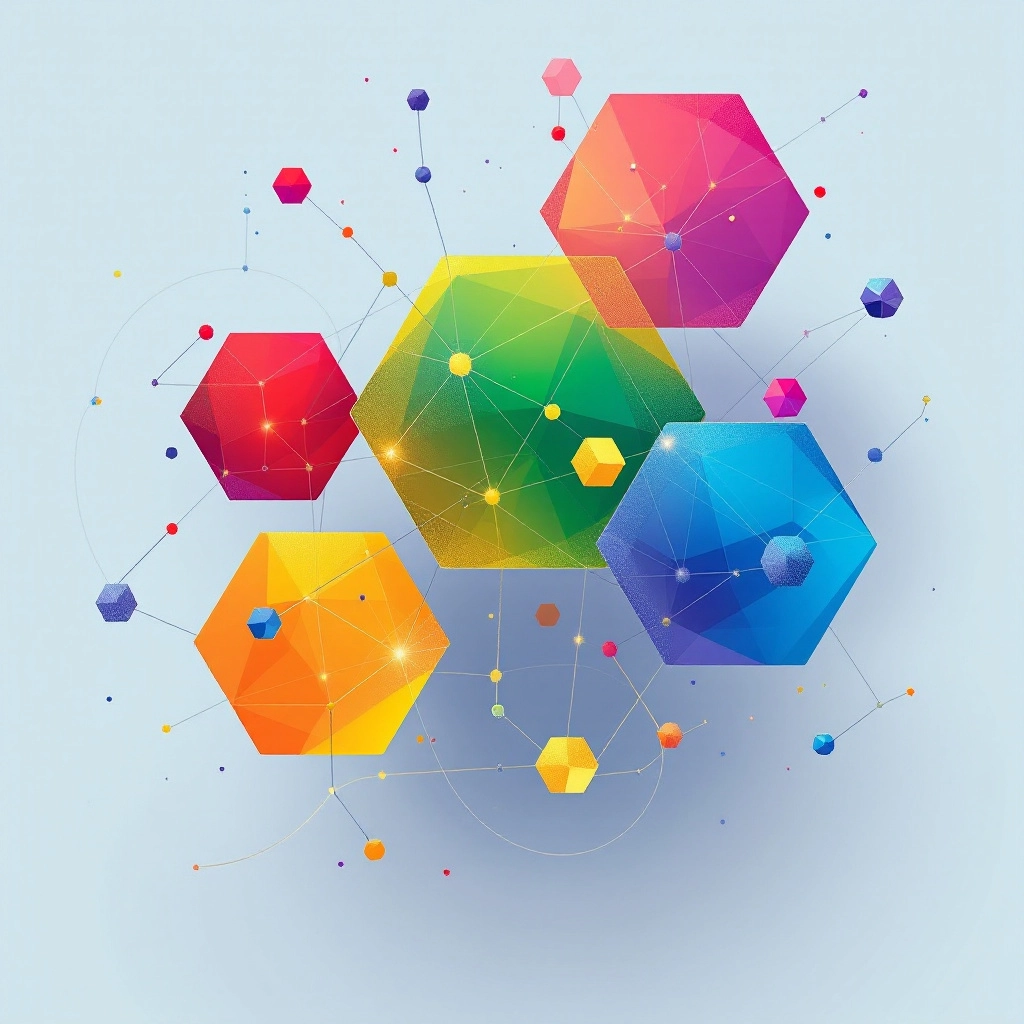# Building Your AI-Enhanced Knowledge System: Part 1 - Laying the Foundation

*Image generated using Flux 1.1 Pro*
## Introduction
"Knowledge is power," Francis Bacon famously declared in the 16th century. Fast forward to today, and this statement has never been more true - though perhaps not in the way Bacon imagined. In our digital age, we're not just dealing with knowledge anymore; we're swimming in an ocean of information. And as Claude Shannon, the father of information theory, pointed out, "Information is the resolution of uncertainty."
But here's the thing that keeps me up at night: having information isn't enough. The real power lies in how we organize and access it. Think about it - we're living in this incredible era where AI can help us make sense of massive amounts of data, but first, we need a solid foundation to build upon. A place where all our thoughts, readings, and ideas can come together and interact.
That's why I'm starting this series about my information workflow. And I want to kick it off by talking about what I consider the backbone of any modern knowledge system: Obsidian. Not because it's the fanciest tool out there (it's actually quite the opposite), but because it fundamentally changes how we can interact with our own thoughts and ideas in this AI-powered world.
Look, I've tried pretty much everything - Notion, Roam, you name it. But Obsidian just hits different, especially now that AI is changing how we handle information. What makes Obsidian stand out is its beautiful simplicity: everything stays local on your computer in plain Markdown files. No fancy proprietary formats, no locked-in databases. Just simple text files that AI tools absolutely love to work with. And because it's all local, your data stays yours. You can do whatever you want with it, move it around, back it up, or plug it into other tools. It's like having complete freedom with your digital thoughts.

*Image generated using Flux 1.1 Pro*
## The Power of Central Storage
I've read countless articles about Obsidian - some praising it as the ultimate note-taking tool, others dismissing it in favor of more structured alternatives like Notion. And yes, I'll admit it - I'm a sucker for those clickbait titles comparing note-taking apps. But here's what I've discovered after falling down numerous productivity rabbit holes: the key to an effective information system isn't about finding the perfect tool, it's about having a reliable central backbone for your digital knowledge.
In my journey, I found my solution in Obsidian. Its local storage, plain text files, and extensive plugin system perfectly match my needs. But that's just my path - the fundamental principle that matters is having a central point where information can flow freely and connect naturally.
This shift in thinking perfectly aligns with our current AI-powered era. We're moving away from meticulously organized systems with rigid structures and categories. That approach made sense when finding information depended entirely on manual organization. But now? AI can find patterns and connections in unstructured data that we'd never spot ourselves.
What matters is having a flexible foundation that can handle various types of information and play well with other tools. Whether you choose a note-taking app, a well-configured cloud drive, or build your own system, the key is keeping your data accessible and future-proof. The beauty of this approach is that you can focus on capturing ideas and let modern AI tools help you find and connect them later. It's like having a digital garden where you can plant ideas anywhere, and smart tools help you discover the patterns and connections that emerge naturally into something beautifully simple. When I'm capturing information, I just let it flow in naturally. Voice notes from my morning walks, screenshots of interesting tweets, random thoughts during coding sessions - everything gets a home in Obsidian. I don't worry about perfect organization anymore because I know I can find it later.
When I'm creating something new, like this article, Obsidian really shines. I can pull up all my related notes, and suddenly I'm seeing connections I never noticed before. Old ideas mix with new ones, and AI tools help me spot patterns I might have missed. It's like having a conversation with my past self while building something new.

*Image generated using Flux 1.1 Pro*
## Essential Characteristics of a Modern Knowledge System
After years of experimenting with different tools and approaches, I've identified several critical characteristics that any modern knowledge management system needs to have. Let me break down each one and explain why it matters in our AI-enhanced world.
### 📁 Local Storage and Data Ownership
This is non-negotiable for me. When your notes live on someone else's servers, you're at the mercy of their business decisions, pricing changes, and service availability. I learned this the hard way with Notion - while it's excellent for collaboration, having my personal knowledge base dependent on their servers made me uncomfortable. What if they change their API? What if their servers go down when I need my notes most?
Obsidian's approach of storing everything locally in plain markdown files means I truly own my data. I can back it up however I want, sync it across devices using any service I choose, and never worry about losing access to my notes.
### 🔌 Plugin System and Extensibility
The way we interact with information is evolving rapidly, especially with AI in the picture. Your knowledge system needs to be able to adapt and grow with these changes. This is where Obsidian's plugin system shines - it's open and robust, allowing deep customization and integration with other tools.
I've contributed to several plugins myself, particularly around voice notes and AI integration. This kind of extensibility is something you just can't get with closed systems like Notion or simple note-taking apps like Google Keep.
### 📝 Focus on Knowledge Management
The tool's primary purpose matters enormously. While VS Code has an amazing plugin ecosystem and handles text files beautifully, its development will always prioritize coding features over knowledge management. Similarly, while Notion excels at team collaboration, its features are built around that use case rather than personal knowledge management.
Obsidian was built specifically for managing personal knowledge, and while I personally don't heavily use features like the graph view or backlinks anymore, their very existence demonstrates something crucial: this is a system that accommodates different ways of thinking and working with information. These features aren't just interface elements - they represent the underlying capability to create and maintain connections between pieces of information. For AI tools, these explicit connections provide an additional layer of context beyond pure semantic similarity, helping avoid the common pitfalls of Retrieval Augmented Generation systems that rely solely on content matching. It's the difference between a collection of disconnected files and a true knowledge network that can be traversed and understood in multiple ways.
### 🔄 Standard File Formats
Your notes should be stored in a format that's both human-readable and future-proof. Proprietary formats are a dead end - they lock you into specific tools and make it harder to integrate with new technologies as they emerge.
Markdown has become the de facto standard for text-based content, and for good reason. It's simple, readable, and widely supported. When your notes are in markdown, they're ready to work with any tool that comes along, from AI assistants to publishing platforms.
### 🤖 AI-Ready Architecture
As AI becomes more central to how we work with information, your knowledge system needs to be ready for it. This means having your notes in a format that AI tools can easily process, with an architecture that allows for deep integration with AI services.
The combination of plain text storage and an extensible plugin system makes it easy to integrate AI tools with your notes. Whether it's generating summaries, finding connections, or helping with writing, your knowledge system should be ready to leverage AI capabilities.
### Why Obsidian Works for Me
Obsidian hits all these points for me, but it's not the only possible solution. Let's examine various alternatives through the lens of our essential characteristics:
#### 🌐 Cloud-Based Solutions
**Google Docs/Drive:**
- Advantages: Excellent collaboration features, familiar interface, automatic cloud backup
- Limitations: Lacks true knowledge management features, proprietary format, requires internet connection, no local-first approach
- AI Readiness: While Google's AI features are powerful, they're limited to Google's ecosystem
**Microsoft OneNote:**
- Advantages: Rich formatting options, seamless Microsoft integration, good for visual organization
- Limitations: Proprietary format makes migration difficult, limited extensibility, complex file structure
- AI Readiness: Microsoft's AI integration is promising but locked into their ecosystem
#### 💻 Local-First Alternatives
**Logseq:**
- Advantages: Open-source, local-first like Obsidian, excellent for structured thinking
- Limitations: Steeper learning curve, smaller plugin ecosystem
- AI Readiness: Good API support for AI integration, but less mature than Obsidian
**VS Code with Extensions:**
- Advantages: Extremely extensible, excellent text editing capabilities
- Limitations: Primary focus on coding makes knowledge management features feel bolted-on
- AI Readiness: Excellent AI integration options but requires technical expertise
#### 📱 Simple Note-Taking Apps
**Apple Notes:**
- Advantages: Clean interface, seamless Apple ecosystem integration
- Limitations: Limited extensibility, basic knowledge management features
- AI Readiness: Limited to Apple's ecosystem
**Google Keep:**
- Advantages: Quick capture, simple organization
- Limitations: Too basic for serious knowledge management
- AI Readiness: Basic Google AI features only
#### 🚀 Modern Alternatives
**Notion:**
- Advantages: Powerful databases, excellent collaboration
- Limitations: Cloud-only, can be slow, proprietary format
- AI Readiness: Good AI features but limited to their platform
**Roam Research:**
- Advantages: Pioneer in bidirectional linking, strong academic focus
- Limitations: Expensive, cloud-only, locked into their ecosystem
- AI Readiness: Good but limited to their platform
The key is understanding what you need from your knowledge system and choosing a tool that aligns with those requirements. For me, Obsidian provides the perfect balance of local storage, extensibility, and AI-readiness, but your ideal solution might look different depending on your specific needs.

*Image generated using Flux 1.1 Pro*
## First Steps: Building Your Knowledge System
Congratulations! You've just taken the first crucial step in building your modern knowledge system - understanding what makes a solid foundation. Think of it as laying the groundwork for your digital brain. The key characteristics we've explored - local storage, standard formats, extensibility, and AI-readiness - aren't just features, they're the pillars that will support your entire knowledge workflow.
I've shared my personal choice of tools and how they work for me, but that's just one path among many. What matters most is choosing a solution that embodies these essential principles while matching your specific needs and workflow. The perfect tool is the one that feels natural to you while ensuring your knowledge remains accessible and future-proof.
But this is just the beginning of your journey. Having a solid foundation is essential, but it's what we build on top of it that truly matters. In the upcoming articles of this series, we'll explore three game-changing aspects of knowledge management:
1. **The Art of Capture**: How do you get information into your system effortlessly? We'll explore various methods for capturing thoughts, ideas, and insights - from quick notes during your morning walk to saving interesting passages from your reading. The goal? Making information capture so natural it becomes second nature.
2. **The Power of Retrieval**: A collection of notes is only as valuable as your ability to find and connect them. We'll dive into modern techniques for discovering connections in your knowledge base, using AI to surface relevant information exactly when you need it.
3. **From Knowledge to Creation**: This is where everything comes together. We'll explore how to transform your accumulated knowledge into new insights, articles, and projects. Because ultimately, the goal isn't just to collect information - it's to create something meaningful from it.
The beauty of starting with these fundamental principles is that they give you the freedom to build your perfect system. Whether you're writing academic papers, managing projects, or developing software, you now understand what makes a reliable center that can grow and evolve with your needs.
Remember, this isn't about copying someone else's system - it's about building something that works for you. The principles we've discussed are your building blocks. How you arrange them is up to you. The tool you choose should feel like a natural extension of your thinking process while ensuring your knowledge remains yours, accessible, and ready for whatever the future brings.
Stay tuned for the next part of this series, where we'll start adding the next layers to your knowledge system. The principles are clear - now let's build something amazing on top of them.
---
Tags: #workflow, #productivity, #note-taking, #obsidian, #AI, #knowledge-management